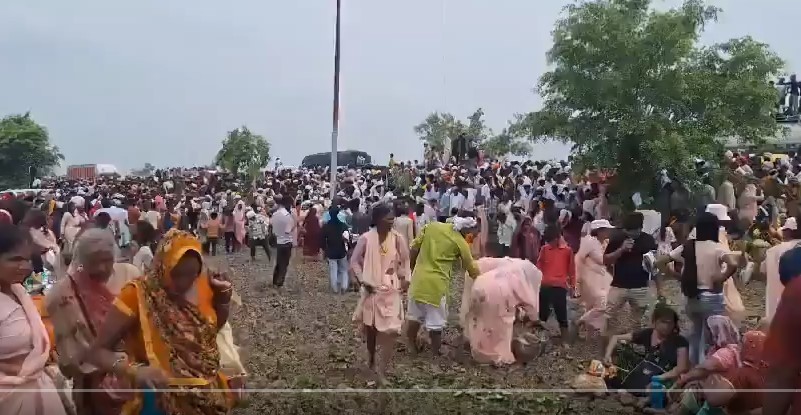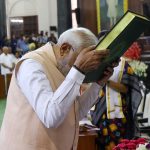In a heart-wrenching turn of events, a spiritual gathering in Uttar Pradesh’s Hathras district ended in tragedy on July 2, 2024. The incident, now known as the Hathras Stampede, has left the nation in shock and raised serious questions about crowd management at religious events.
Devastating Incident at “Bhole Baba” Satsang
The fateful day began as thousands of devotees flocked to Phulrai village for a satsang (religious prayer meeting) organized by Narayan Saakar Hari, popularly known as “Bhole Baba.” As the event drew to a close, chaos erupted, resulting in a stampede that claimed the lives of at least 87 people. The majority of victims were women and children, adding to the poignancy of the tragedy.
हाथरस सत्संग में भगदड़ से हुई मौतों का मामला !!
मृतकों को 2-2 लाख तथा घायलों को 50-50 हजार की आर्थिक सहायता देने के मुख्यमंत्री ने दिए निर्देश!!
कार्यक्रम आयोजकों के विरुद्ध होगी FIR !!#Hathras #हाथरस #HathrasNews pic.twitter.com/Wq0KerHtu4
— Journalist Navin Raghuvanshi (@RaghuvanshiLive) July 2, 2024
Overcrowding Suspected as Primary Cause
Initial reports suggest that the venue was ill-equipped to handle the massive turnout. The disparity between the available space and the number of attendees created a pressure cooker situation. As devotees attempted to leave the crowded area, panic spread, leading to the deadly stampede.
Government Response and Investigation
Uttar Pradesh Chief Minister Yogi Adityanath swiftly responded to the crisis, announcing compensation for the affected families. The families of the deceased will receive Rs 2 lakh, while the injured will be provided Rs 50,000. Additionally, a committee has been formed to investigate the incident thoroughly, aiming to prevent such tragedies in the future.
The Enigmatic Figure Behind the Event
At the center of this tragic event is Narayan Saakar Hari, the organizer who goes by the moniker “Bhole Baba.” Known for his unconventional approach to spirituality, Hari stands out with his preference for suits and ties over traditional saffron robes. His claim of previously working for the Intelligence Bureau before embracing a spiritual path adds an intriguing layer to his persona.
Lessons Learned and Future Precautions
The Hathras Stampede serves as a grim reminder of the potential dangers associated with large gatherings. As investigations continue, it is crucial for authorities and event organizers to reassess safety protocols and implement stricter measures to ensure the well-being of attendees.
Moving forward, there is a pressing need for better crowd management strategies, improved communication systems, and more rigorous venue assessments. The tragedy underscores the importance of balancing religious fervor with practical safety considerations.
As the nation mourns the loss of life, the incident prompts a broader discussion on the management of religious events and the responsibilities of spiritual leaders. It is hoped that the lessons learned from this heartbreaking episode will lead to more secure and well-organized gatherings in the future, ensuring that faith and safety go hand in hand.
Follow Us on Instagram | Twitter | Facebook | YouTube | Flipboard | Google News

























